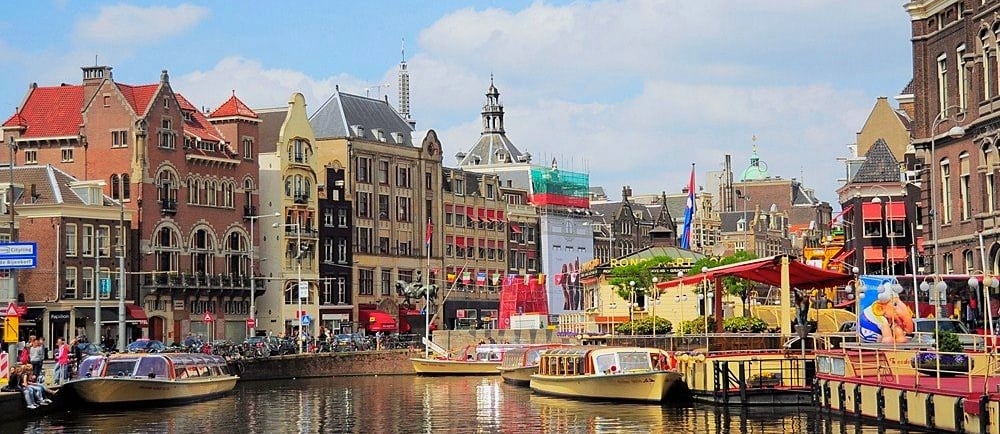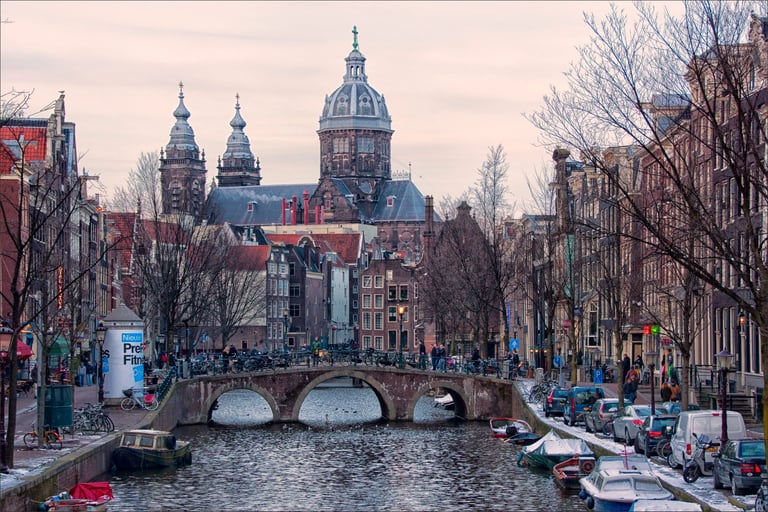Amsterdam – The Canals Remember
Wander through Amsterdam’s storied canals, where every bridge and waterway echoes with history, art, and timeless charm
DESTINATIONS
Jetsclusive
6/25/20254 min read


Amsterdam – The Canals Remember
Amsterdam’s canals are the city’s signature: curving ribbons of water, reflecting centuries of stories, lined by gabled houses and leafy quays. More than just pretty backdrops for photos, these waterways are the backbone of the city’s history, character, and daily rhythms. The canals remember the ambitions of shipbuilders, the dreams of merchants, and the laughter of locals and visitors alike. Even now, these waters ripple with history and community life, reminding everyone that Amsterdam has always been a city shaped by the flow of its canals.
From Waterways to World Heritage: The Evolution of Amsterdam's Canals
Amsterdam’s canal system began as a solution to practical problems. The city sits below sea level, surrounded by marshes and rivers that threatened to flood at every turn. In the late 16th and early 17th centuries, the "Grachtengordel" or canal belt took shape. This wasn’t just a construction project—it was a monumental plan to guide the growth of a thriving port city.
Over time, these arteries fueled commerce, inspired architectural gems, and gave rise to neighborhoods where artists, inventors, and merchants lived side by side. Today, the canal ring is recognized globally as a model of urban planning and stands protected as a UNESCO World Heritage Site.
Engineering Marvels and Urban Planning
The story of Amsterdam's canals is one of technical triumph. Between 1613 and 1662, architects and engineers designed a series of concentric canals—Herengracht, Keizersgracht, and Prinsengracht—radiating outward in graceful arcs, connected by a network of cross-canals.
Building below sea level pushed engineers to invent better pumps, stable dikes, and clever sluice gates.
Managing water flow was critical. The canals kept the city dry while providing a clean water source and a waste disposal system.
Grid-like streets and planned neighborhoods rose along the canal lines, making Amsterdam modern for its time.
The canal plan became a blueprint for urban expansion. Many other cities looked to Amsterdam’s example.
Compare Private Jet Pricing To Amsterdam Here Powered by Villiers Jets — Trusted by 1,000+ flyers worldwide
Symbol of Prosperity and Innovation
During the Dutch Golden Age, the canals weren’t just channels for boats—they were engines of wealth. Ships from across Europe and far-off continents moored here, bustling with ivory, spices, and cloth.
Merchants grew rich, building houses with ornate, topped gables. Taxes were based on the width of the house, leading to those famously narrow, tall facades.
Warehouses and shops lined the waters, making trade easier and more efficient.
Distinctive facades became status symbols, and Amsterdam’s streets developed a unique, harmonious skyline.
It’s easy to see how the canals became both a symbol and tool of the city’s success.
UNESCO World Heritage Status and Preservation
In 2010, UNESCO honored Amsterdam’s canal ring as a World Heritage Site. This treasured designation credits the canals’ practical genius and beauty, as well as their importance in urban history.
Ongoing preservation efforts include:
Cleaning and dredging to keep water quality safe for people and wildlife.
Regulating boat traffic with sustainable boat policies that cut down on noise and pollution.
Upgrading old bridges and quay walls, ensuring they survive storms, floods, and constant use.
Restricting high-rise construction near the canals to protect the historic skyline.
The city balances tourism and conservation, working with locals and experts to keep this living heritage intact.
The Canals in Amsterdam's Cultural, Architectural, and Everyday Life
Amsterdam’s canals serve as open-air theaters, playgrounds, and community corridors. They bring people together, shape everyday rituals, and nurture the city’s unique sense of place.
Architectural Gems and Bridge Landmarks
Walk any stretch of the canal ring and you’ll spot Amsterdam’s hallmark architecture.
The Golden Bend (Gouden Bocht): This segment of Herengracht hosts the city’s grandest houses, their elegant facades a tribute to old merchant fortunes.
Magere Brug (Skinny Bridge): This famous white wooden bridge connects the banks over the Amstel River. It's a favorite spot for romantic photos and a nightly show of twinkling lights.
Canal houses reflect a blend of Renaissance and Baroque influences, with ornately carved gables and big windows for lifting goods from boats.
Bridges crisscross the city, not just joining neighborhoods but also providing favorite meeting spots and viewpoints for locals.
Compare Private Jet Pricing To Amsterdam Here Powered by Villiers Jets — Trusted by 1,000+ flyers worldwide
A Lifeline for Community and Nature
Amsterdam’s canals aren’t just for looking at. They’re active parts of city life.
Locals swim and row on sunny days, sharing the water with ducks, swans, and fish.
Floating gardens and houseboats line the canals, adding splashes of green and giving a home to nature in the heart of the city.
Parks and sidewalks along the water become gathering spots for picnics, music, and quiet reflection.
The canals support biodiversity, too. Fish, birds, and aquatic plants thrive in the mix of fresh and brackish water, while careful management keeps the ecosystem healthy.
Festivals, Events, and Contemporary Uses
Amsterdam's canals always have something going on:
King’s Day: The entire city dresses in orange, and boats packed with revelers drift down the canals while music and laughter fill the air.
SAIL Amsterdam: Every five years, tall ships from around the globe parade through the harbor and down the canals, drawing huge crowds.
Open Canal House Days: Once a year, private canal homes open their historic doors to visitors.
Canal cruises take visitors on narrated journeys past centuries-old houses and bustling markets.
Markets and pop-ups often set up on floating barges or harborside, selling everything from flowers to street food.
Locals cycle along the canals, relax at waterside cafés, and use the bridges and towpaths as scenic commutes to work or school. The water is both a canvas for public life and a backdrop to daily routines.
Conclusion
Amsterdam’s canals echo with memories of ambition, artistry, and everyday joy. More than picturesque waterways, they’re timeless testaments to the city’s ingenuity and spirit. As stories ripple across the water—from merchant fleets to festival floats—the canals remain central to Amsterdam’s identity.
The balance between preserving heritage and supporting modern life isn’t simple, but Amsterdam continues to set the example. The city honors its past while using these storied waterways to bring people together in the present.
In Amsterdam, the canals don’t just remember—they keep the city alive.


Luxury
Explore the world of private aviation and travel.
support@jetsclusive.net
© 2025. All rights reserved.
